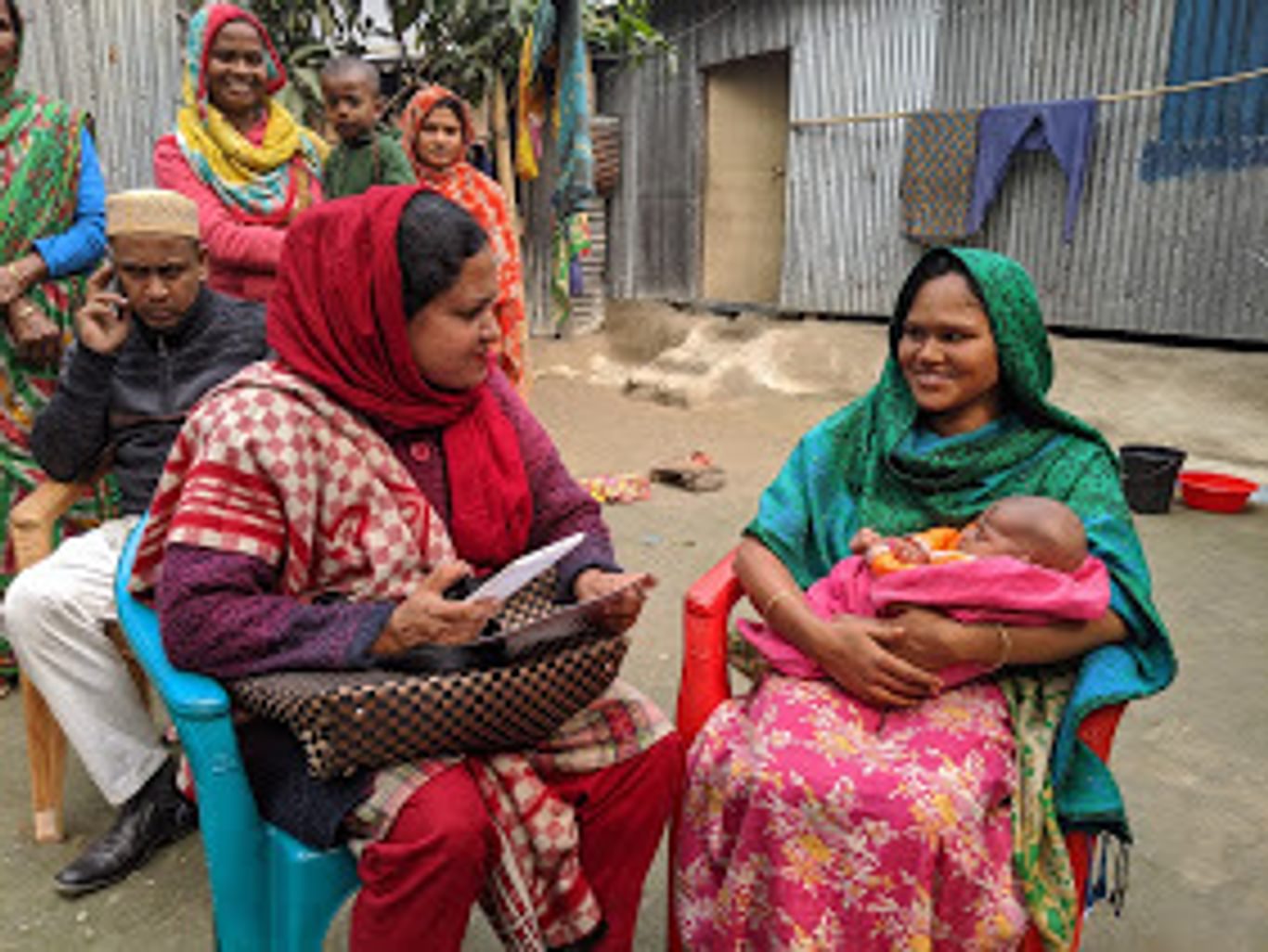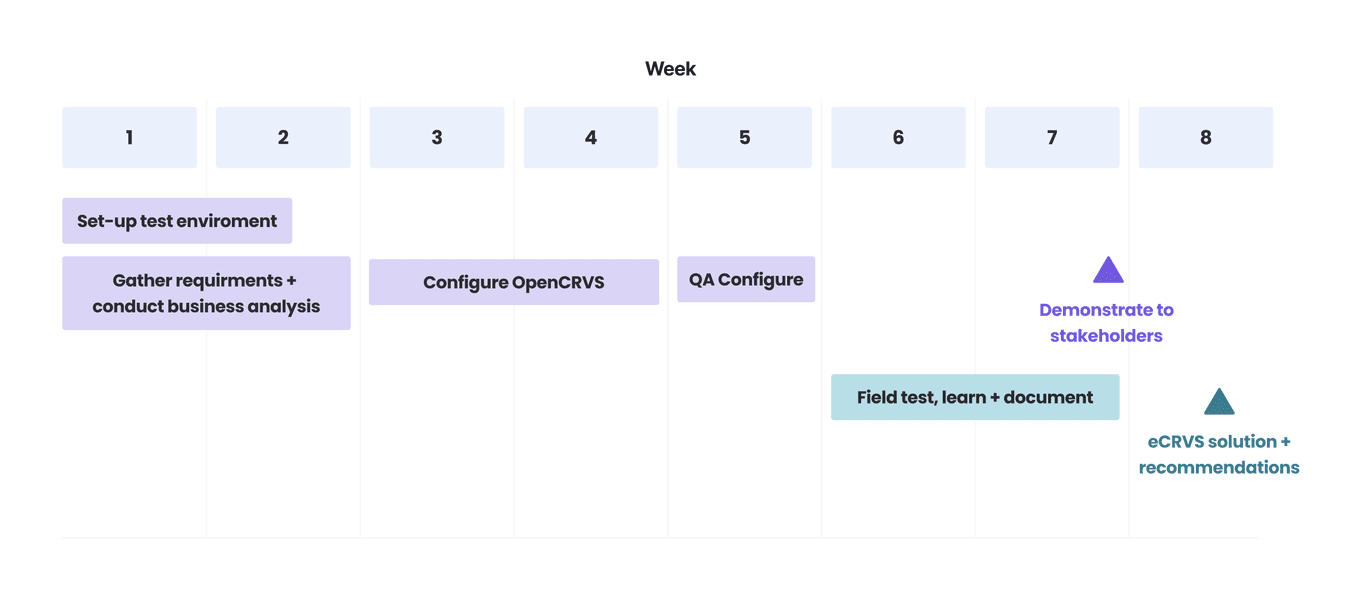What is a Proof of Concept (PoC)?
OpenCRVS can be quickly configured to meet the basic civil registration needs of a country, which provides a unique opportunity to test the product and learn more about specific business needs and system requirements before procuring a full system.
The Proof of Concept (PoC) may confirm OpenCRVS as the right product for implementation or help identify the requirements that can be used within a competitive tender process.
When is a PoC suitable?
- You are considering a digital CRVS system but have not yet decided on a product
- You are interested in an OpenCRVS implementation but want to get a feel for the solution via a low-cost prototype first
- You need to define future-state civil registration business processes
- You want to co-create the eCRVS system requirements together with key users

A typical proof of concept
Detailed below is a high-level workplan and key steps for PoC activities. These will cost between $50k and $100k depending on the size of country and extensiveness of field-testing and requirements analysis.

-
The OpenCRVS PoC is best hosted in a private or public cloud. For step-by-step guidance on how to prepare a new OpenCRVS environment see Installation and Configuration guidance.
-
A Business Analyst will gather all the inputs required to configure OpenCRVS for the country context, as well as gaining a basic understanding of the business requirements that OpenCRVS must support through engagement with key stakeholders.
-
A System Administrator will then be able to configure OpenCRVS for the PoC with a minimum of inputs:
Vital event registration forms
Vital event certificates
Administrative reference data
Health facility reference data
Population data, including crude birth / death rates
Country customisation e.g. logos, translations etc.
For step-by-step guidance on how to configure OpenCRVS, see Installation and Configuration guidance.
-
Test the configured version of OpenCRVS with end-users in a variety of different contexts, in order to:
Verify that existing OpenCRVS functionality is relevant in-country
Identify additional system requirements that need to be built
Gather user feedback to ensure the product is fit for purpose
Understand what service-delivery models are most effective in achieving CRVS goals
-
Share the results of the field-testing with key stakeholders and demonstrate the PoC in a conference room environment or in the field.
-
Based on the learnings from the OpenCRVS proof of concept, a country can decide to:
Use OpenCRVS as their eCRVS solution, with further modifications to respond to feedback from field testing
Use the PoC learnings to inform system requirements for the procurement of an eCRVS solution
PoC locations
Proofs of concept have been conducted in Bangladesh, Zambia and Niue.
